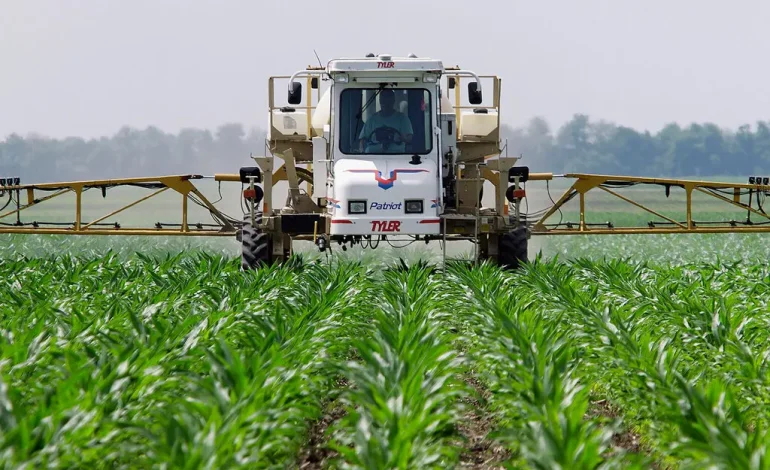Glyphosate, the active ingredient in the widely used herbicide Roundup, has sparked ongoing debates about its safety and potential health risks, the New York Times reports.
Proponents argue that glyphosate is safe when used according to guidelines, while critics raise concerns about its potential links to cancer, other health problems, and environmental impact. As we see growing calls for a reevaluation of herbicide use, it’s important to understand the current state of scientific research.
Glyphosate was first introduced by Monsanto in 1974 under the brand name Roundup, and it became the most popular herbicide in the US after genetically modified crops resistant to it were developed. It works by inhibiting an enzyme essential for plant growth, which effectively kills weeds.
Today, glyphosate is widely used across agricultural fields, particularly on crops like corn and soybeans. It’s also used in various other settings, including along railways and by home gardeners. Some crops, such as wheat and oats, are also treated with glyphosate to speed up harvesting, a process known as desiccation, which environmental groups argue may lead to pesticide residues in foods like pasta and cereals.
Glyphosate exposure can happen in several ways, from directly handling products that contain it to consuming food with trace amounts of residue. The Environmental Protection Agency (EPA) has stated that glyphosate exposure at low levels is considered safe for the general population. Studies have found that 90% of food samples tested had glyphosate residue levels below the EPA’s safety threshold. However, exposure tends to be higher among those who work directly with the chemical, like farmers, with studies showing up to ten times the levels found in the general population.
Despite this, there’s a need for more research to better understand exposure levels, especially in those living near treated fields. Research by scientists like Dr. Cynthia Curl suggests that proximity to fields during spraying seasons can significantly increase glyphosate exposure for individuals living nearby, such as pregnant women.
The health risks associated with glyphosate have been the subject of ongoing scientific research. Some studies suggest that glyphosate can damage DNA, increase inflammation, and lead to tissue damage in animals. Epidemiological studies have raised concerns about a potential link to non-Hodgkin’s lymphoma, particularly among farmers and farm workers, though not all research has found such a connection.
A significant point of contention is whether glyphosate may disrupt the endocrine system or affect the nervous system’s development. Some studies suggest that it might alter the gut microbiome, raising concerns about its role in conditions like celiac disease or gluten intolerance, though these claims are still debated by experts.
Glyphosate’s safety has also been contested in relation to its chemical mixture in herbicides, which may include additional substances that could pose additional risks. While studies typically focus on glyphosate alone, the full formulation of glyphosate products could amplify its toxicity in ways not yet fully understood.
Major health organizations have not reached a consensus on glyphosate’s safety. The International Agency for Research on Cancer (IARC) classified glyphosate as “probably carcinogenic to humans” in 2015, while the EPA concluded in 2017 that glyphosate is “not likely to be carcinogenic to humans” when used according to the label. Monsanto, now owned by Bayer, has consistently maintained that glyphosate is safe at the levels most people encounter. However, the company has spent billions of dollars settling lawsuits related to claims that glyphosate exposure caused cancer.
For most people, exposure levels are low, and experts generally agree that the risks are minimal. However, some advocacy groups and researchers are calling for more stringent regulations or outright bans in specific areas, such as parks and playgrounds, due to public concerns about potential health effects.
If you’re concerned about glyphosate exposure, there are several steps you can take to reduce the risk. Washing and peeling produce may help lower pesticide residues, but this may not significantly reduce glyphosate levels, according to experts like Dr. Curl. Eating organic foods when possible is another way to limit exposure, as organic farming typically avoids glyphosate use.
For those living or working near agricultural areas, exposure may be higher, and additional protective measures should be considered. More research is needed to fully understand the risks and determine whether the current exposure guidelines are sufficient to protect human health.










The latest news in your social feeds
Subscribe to our social media platforms to stay tuned